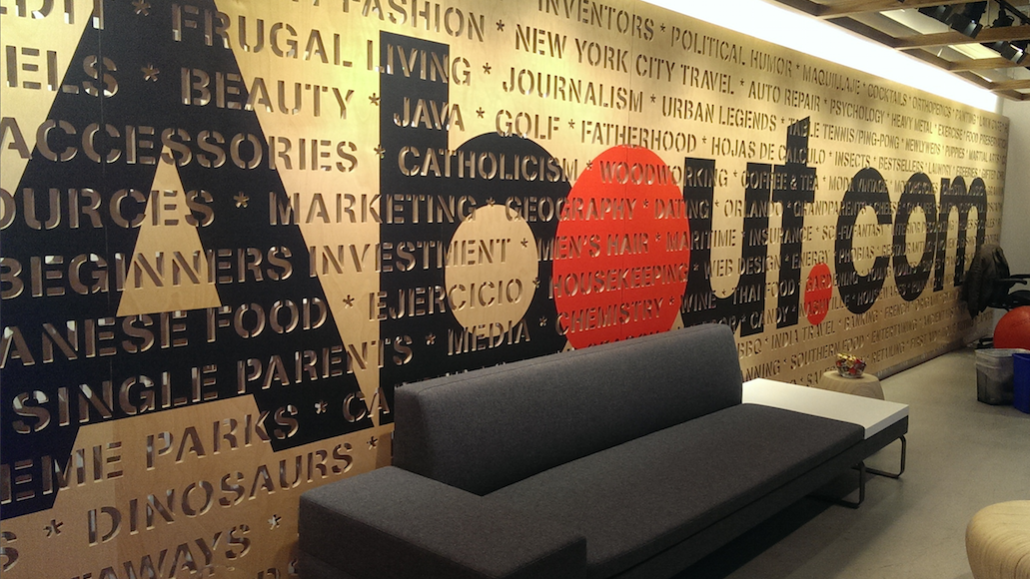Save 50% on a 3-month Digiday+ membership. Ends Dec 5.

About.com’s strides into modernity continue this week with a new, much-needed redesign and a native ad pitch to brands.
The redesign, the site’s first major overhaul in a decade, marks the latest step in a slow-but-steady turnaround for About.com. With its new design, About.com has ditched its famously cramped look for one that gives its articles and images more room to breathe. The redesign also marks the first time that About.com has featured prominent social sharing buttons, underscoring how behind-the-times it’s been until now. The site is also experimenting with story forms (“7 of the best (worst) dancers on the Internet“) that work well on social channels, signaling that it’s looking beyond its old content approach.
For any other site, these changes wouldn’t be a big deal, but for About.com, which gets 85 million unique visitors a month without even trying, they’re proof that the site is putting a lot of thought into its new direction. “We have to present this stuff in a more engaging way,” said Neil Vogel, CEO of About.com. “We have to make our travel site look like a travel site and our health site more like a health site.”
But the redesign is more than just a cosmetic upgrade. Under the hood, About.com’s content strategy is increasingly data-heavy, thanks to its three-person data team. The move was a necessity. About.com has more than 3.5 million pieces of content about a wide range of topics, and the site’s data scientists were charged with making sense of how people are jumping between articles and what they’re most interested in searching for. This not only helps the site figure out what to focus on but should also help sweeten its image in the eyes of advertisers.
Vogel said that one of the site’s biggest advantages is that its content is inherently intent-driven. Readers who search Google for travel tips and land on the site, for example, are ripe targets for travel advertisers looking to get their attention. “We know what the Internet is looking for,” Vogel said.
About.com has already translated that into native placements for brands like Norton and Merrell, with brands like Disney expected to join them in October.

Despite About.com’s traffic and content well, there are still questions about whether the site can truly adapt for a socially driven Web that feels at odds with how About.com does business. While the site’s focus on evergreen problem-based content performs well in search results, it’s less likely to get shared: Less than 10 percent of About.com traffic comes from social channels. That’s the exact opposite trend that’s driving growth at most publishers. (About.com’s traffic is essentially flat year-on-year.)
“They are still interesting from a scale perspective, but it remains to be seen whether they can change consumer behavior to their benefit to grow,” said Craig Atkinson, chief digital officer at PHD.
About.com, however, seems to understand today’s content climate, as well as its place in it. And while it’s experimenting with more social-friendly stories, it’s still holding on to its core content strategy.”We’re never, ever going to be a place that’s 50 percent social,” said Vogel. “We’re just not that kind of content.” At least it seems About knows what it’s about.
More in Media

Digiday+ Research Subscription Index 2025: Subscription strategies from Bloomberg, The New York Times, Vox and others
Digiday’s third annual Subscription Index examines and measures publishers’ subscription strategies to identify common approaches and key tactics among Bloomberg, The New York Times, Vox and others.

From lawsuits to lobbying: How publishers are fighting AI
We may be closing out 2025, but publishers aren’t retreating from the battle of AI search — some are escalating it, and they expect the fight to stretch deep into 2026.

Media Briefing: Publishers turn to vertical video to compete with creators and grow ad revenue in 2026
Publishers add vertical video feeds to their sites to boost engagement, attract video ad spend and compete with news creators.





